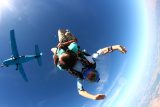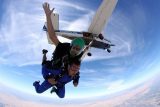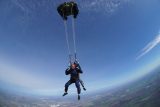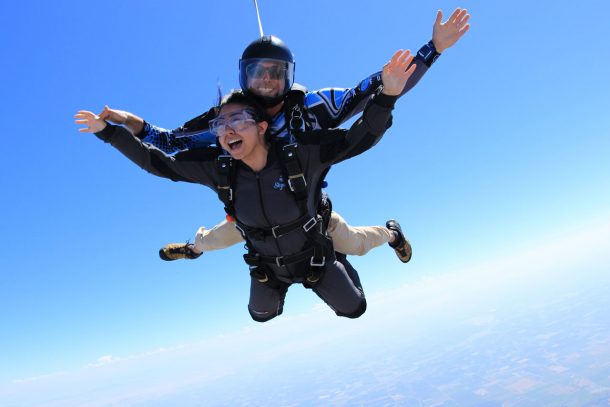What Is A “Hop-n-Pop”
Skydiving. It’s all about jumping from an airplane and falling through the air, right?
Nope!
Though freefall is one awesome part of skydiving, it’s not the only part. Believe it or not, the parachute ride can be just as exciting – especially when you start flying higher performance wings and even competing in parachute based competitions.
Here, we’ll explain hop-n-pops; what they are, how they work and why we do them.
What does ‘hop-n-pop’ mean?
Hop-n-pop is an abbreviated term meaning to jump out of the airplane and pop your parachute straight away. Hop your body out, pop your parachute out – done!
That means that, unlike your typical skydive, there’s no freefall time in a hop-n-pop. Instead, you jump and deploy your parachute straight away. It’s a completely different experience – your parachute even opens differently due to the lower speed – so well worth a try if you haven’t before!
For various reasons, as we’ll go on to explain, hop-n-pops tend to happen from lower altitudes. So a jumper will typically leave the airplane somewhere around five or six thousand feet – while freefallers will go to 13,000 and above.
There are usually fewer people jumping out to do hop-n-pops than there are freefallers, meaning hop-n-poppers have fewer parachutes in their space as they fly around.
Why do people do hop-n-pop jumps?
For the love of the parachute ride
Ask anyone what their favorite part of their jump was, and they’ll probably say the freefall. And it’s understandable – there’s really nothing like that feeling of falling through the air at 120mph, with the wind rushing by. It’s out of this world.
But then ask people what they thought of the parachute ride, and you’ll see their face change from one of pure excitement, to one of calm and happiness. That moment when your parachute opens is magical; everything slows down, it gets very quiet and you’re left gazing out at incredible views as you pilot your way back to earth.
There are plenty of people who make hop-n-pop jumps purely because they love the parachute ride. They enjoy the serenity. They love the views. And a hop-n-pop gives them that.
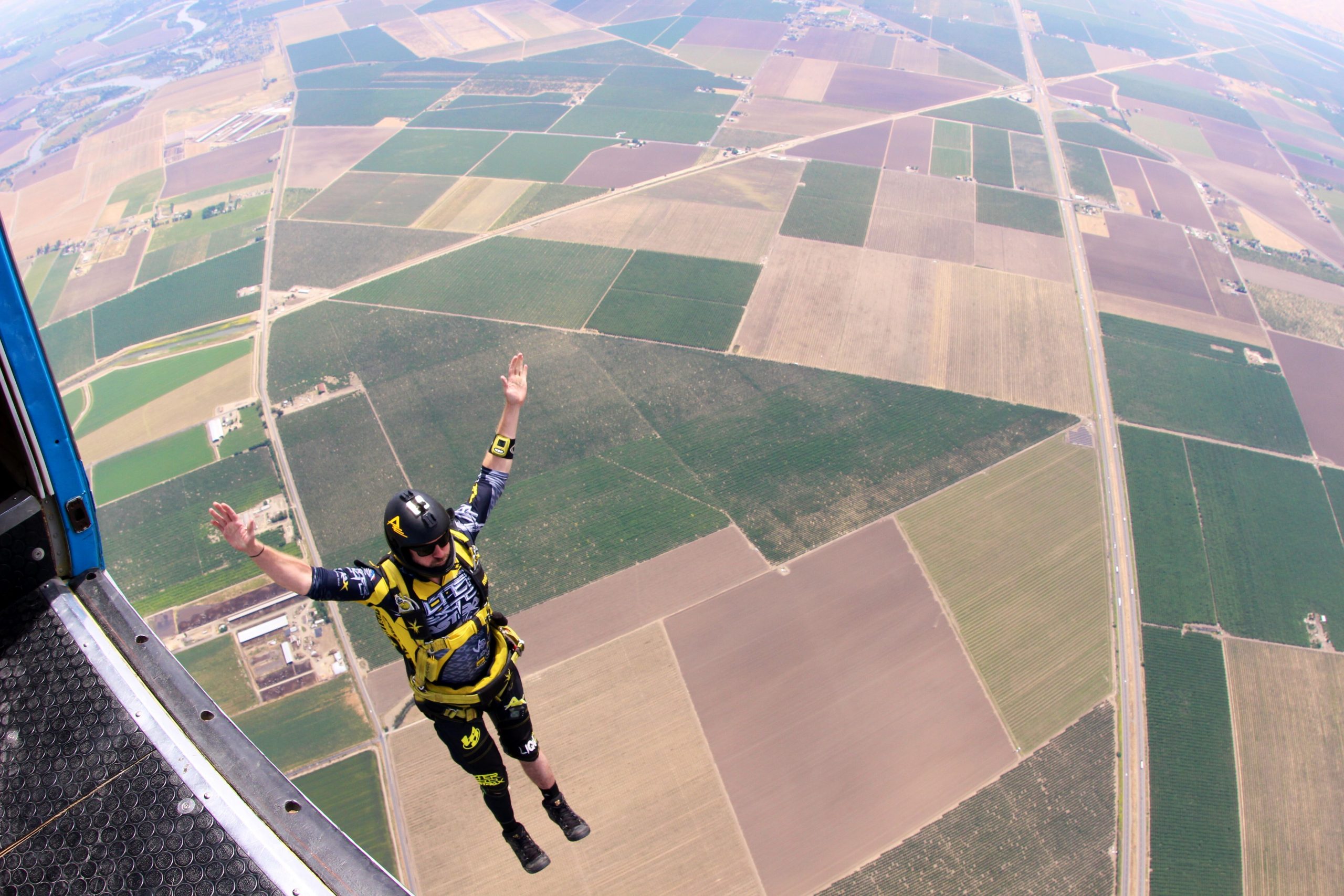
Advanced parachute maneuvers and ‘swooping’
Then there are those people who are working to perfect their parachute piloting skills. These people might be learning to ‘swoop’, which is the act of increasing the descent rate of the parachute through a turn to increase the forward momentum across the ground. The result is a pretty cool ‘swooshing’ sound as they come into land!
Being a pretty advanced maneuver, it’s best done with as few other parachutes in the sky as possible, which is usually the case for hop-n-pops as the majority of people tend to continue to max altitude.
CRW jumps
CRW stands for ‘canopy relative work’ and, to put it in its most basic terms, it’s about creating beautiful formations in the sky by hooking up with other parachutes.
It’s a parachute only discipline, it’s done as a hop-n-pop. So the CRW people will jump out, open their parachutes straight away and then have a good few minutes flying time to build their formations and, in competition, score their points.
In case of emergency
Everyone learning to skydive will make a hop-n-pop jump during their course. Usually, this is after the other lessons have been completed.
This is because learning to jump at a lower altitude and to deploy the parachute straight away is a key skill in the event of an aircraft emergency. If something goes wrong, you need to be getting outta there pronto, and having inexperienced or nervous jumpers blocking the doorway won’t go down too well with everyone else on the airplane!
By making hop-n-pop jumps regularly, we’re much better prepared in a sticky situation.
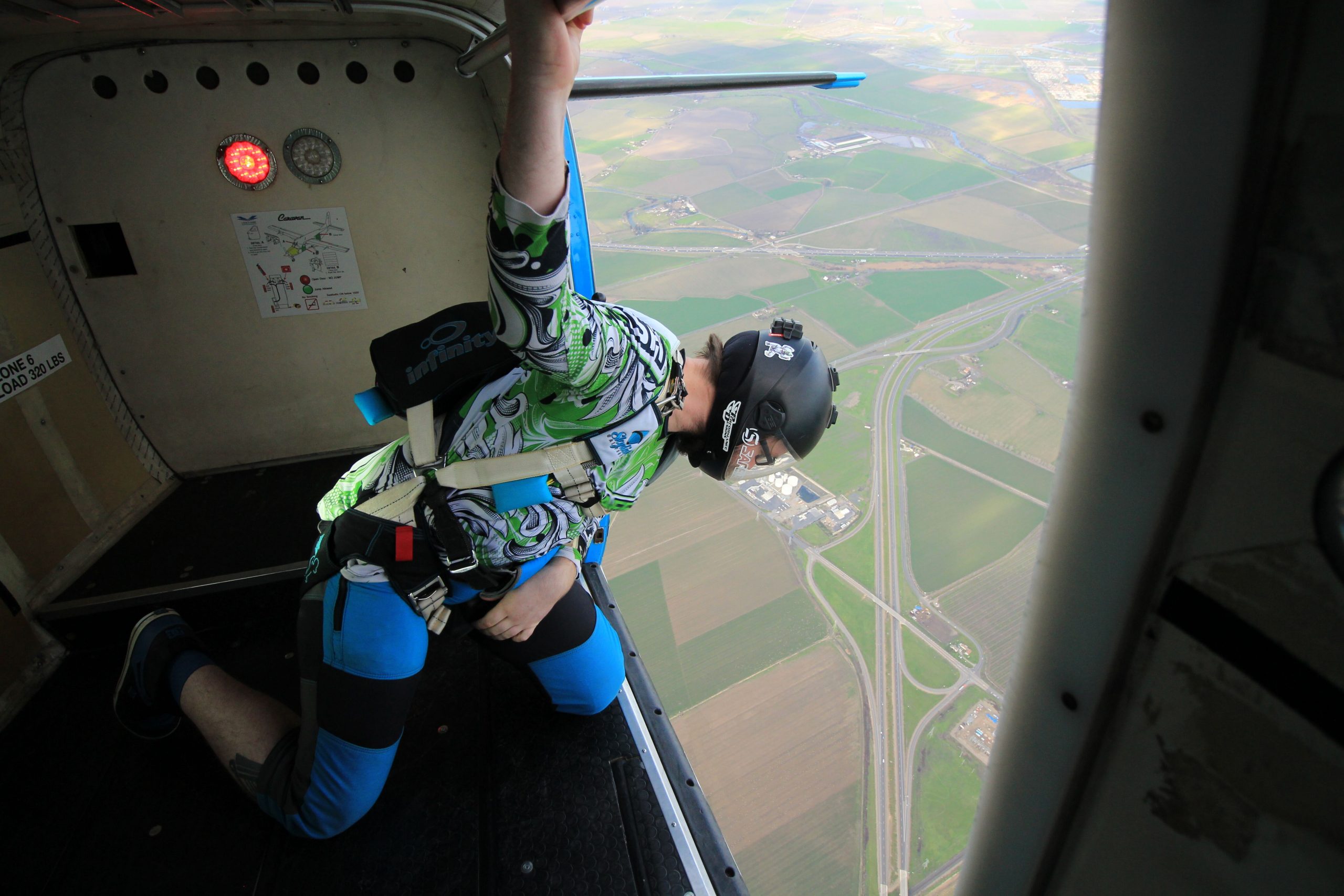
Hop-n-pop from the top
Another phrase you might hear about the drop zone is ‘hop-n-pop from the top’. This is usually something reserved for the end of the day when the sun is starting to go down and the sky turns that glorious shade of orange and pink.
Hop-n-pop from the top means jumping and deploying your parachute straight away from the maximum altitude. You’ll be in the air for probably ten to fifteen minutes, depending on the exit height, your parachute size, and a few other factors. Basically, a hop-n-pop from the top is a chance to go up and take in the magnificent views and fly around with your friends.
The importance of parachute piloting in skydiving
We don’t always talk about the parachute ride when we’re talking skydiving. It’s easy to get caught up in the freefall and the multitude of different ways we can fly our bodies as we fall through the air.
But we can’t forget that the parachute is the thing that ultimately saves our lives. Not only that, but it’s a lot of fun. That’s why we spend so long training to be better pilots – and hop-n-pops are an important part of our education.
Why not come join us in the skies here and skydive in Northern California! Whether you’re a first-timer or a seasoned jumper, we’d love to welcome you.


